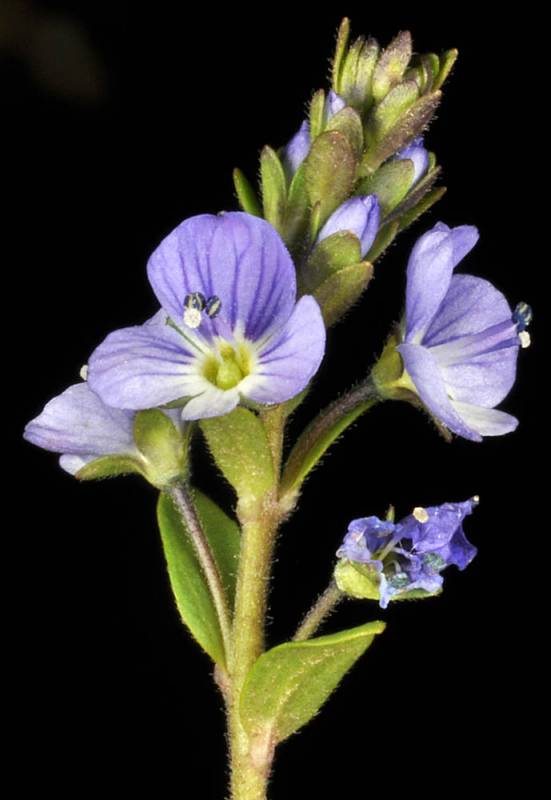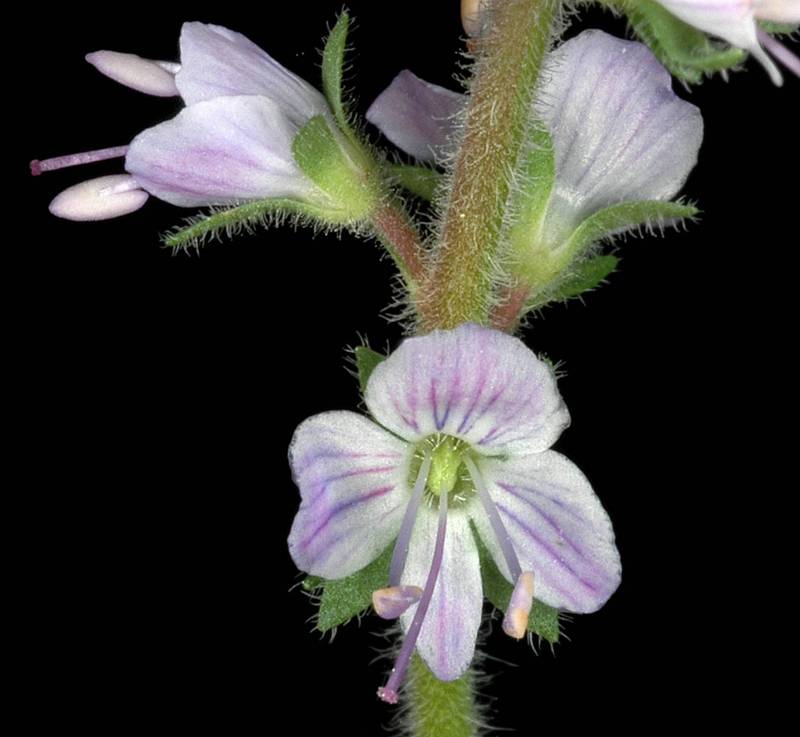Veronica serpyllifolia
Veronica officinalis
thyme-leaved speedwell
Paul's betony, common speedwell
Leaves opposite, elliptic to broadly ovate, 1-2.5 cm. long and 0.5-1 cm. wide, glabrous, entire or slightly toothed, the lower often short-petiolate, the others sessile.
Leaves opposite, elliptic or elliptic-ovate, narrowed to a short petiole, 1.5-5 cm. long and 0.6-3 cm. wide, finely serrate
Flowers on short pedicels in a loose, elongate, terminal raceme, the upper subtending bracts alternate;
sepals 4;
corolla bright blue to white, 4-8 mm. wide, rotate, 4-lobed, the upper lobe the largest;
style 2-3.5 mm. long;
stamens 2.
Inflorescence of spike-like racemes on long peduncles arising from the leaf axils;
pedicels 1-2 mm. long, surpassed by the small, alternate, subtending bracts;
calyx of 4 sepals;
corolla light blue, sometimes with lavender stripes, 4-8 mm. wide, rotate, 4-lobed;
style 2.5-4.5 mm. long;
stamens 2.
Capsule 3-4 mm. high, broader than high, notched, finely glandular-pubescent,
Capsule 4 mm. high, broadly triangular-cordate, nearly truncate.
Veronica serpyllifolia
Veronica officinalis
- Local floras:
BC,
OR,
WA
- Local Web sites:
Flora NW,
PNW Herbaria
WildflowerSearch
iNaturalist (observations)
USDA Plants Database
- LBJ Wildflower Center
- SEINet
- Plants of the World Online
- Encyclopedia of Life
- Wikipedia
- Google Image Search
- Local floras:
BC,
OR,
WA
- Local Web sites:
Flora NW,
PNW Herbaria
WildflowerSearch
iNaturalist (observations)
USDA Plants Database
- LBJ Wildflower Center
- SEINet
- Plants of the World Online
- Encyclopedia of Life
- Wikipedia
- Google Image Search



